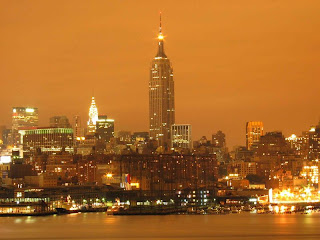 When we talk about pollution, at first we think about sound pollution, air pollution, water pollution, land pollution but we can rarely think about light pollution.The adverse effect of artificial light causes light pollution.
When we talk about pollution, at first we think about sound pollution, air pollution, water pollution, land pollution but we can rarely think about light pollution.The adverse effect of artificial light causes light pollution.Different types of light pollution are light trespass, glare, and sky glow.
Trespass: When unwanted light enters into one's property from a source of outside's property light tresspass occurs.When the light enters the window of one's home causing problems like sleep deprivation or the blocking of an evening view, a common light trespass problem occurs.
Glare: Over lighting or badly placed light where the light shines directly into the eye causes glare. Glare can be categorised into different types, which are as below:
- Blinding glare is caused by staring into the sun. It leaves temporary or permanent vision deficiencies and is completely binding.
- The effect described by disability glare is such as being blinded by oncoming car lights, or light scattering in fog or in the eye, reducing contrast, as well as reflection from print and other dark areas that render them bright, with significant reduction in sight capabilities.
- The discomfort glare does not typically cause a dangerous situation in itself, though it is annoying and irritating at best. If experienced over extended periods, it can potentially cause fatigue.
The 'glow' effect that can be seen over populated areas refers skyglow. Mainly it is the combination of all light reflected from what it has illuminated escaping up into the sky and from all of the badly directed light in that area that also escapes into the sky, being redirected by the atmosphere back towards the ground. When the air is very clear the wavelength of light is strongly related with this scattering. Rayleigh scattering dominates in such clear air by making the sky to be appear blue in the daytime. When there is significant aerosol, the scattered light has less dependence on wavelength, making a whiter daytime sky. Due to this Rayleigh effect, and because of the eye's increased sensitivity to white or blue-rich light sources when adapted to very low light levels, white or blue-rich contributes significantly more to sky-glow than an equal amount of yellow light. To astronomers sky glow is particularly irritation, because it reduces contrast in the night sky to the extent where it may even become impossible to see any but the brightest stars.












0 comments:
Post a Comment